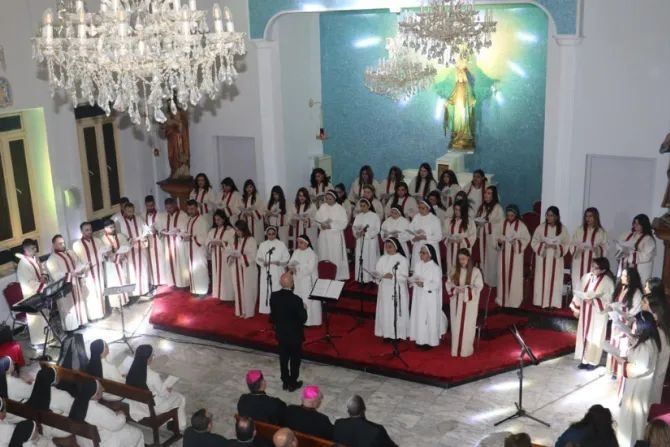The sacred music journey conveys the meanings of religious texts within a melodic framework.
The relationship between religions and music has swung between acceptance and rejection throughout history. Some opposed it and prohibited it, while others permitted it, sanctified it, and incorporated it into their worship rituals. It emerged in several temples and gained its uniqueness according to each religion.
Some religions have seen music as a divine or celestial art, as Father Amir Kammo, conductor of the Chaldean Patriarchal Choir, explained in his talk. He clarified that it is considered an effective force that gives words and rituals a deeper impact on the soul, refining it and encouraging it towards virtue, depending on the type of music accompanying the religious text or prayers.
He continued: "Music has always been an important element in traditions and social celebrations, whether limited to instrumental performance or accompanied by singing." And after it became an essential element in worship, it took on various musical forms and styles in religious gatherings inside and outside temples.


An integral part of the celebratory rituals
Khammo said that the Second Vatican Council dedicated a special chapter to ecclesiastical music and seriously emphasized clarifying the role of the universal church's musical heritage, considering it "a treasure whose value is priceless." Especially since sacred chanting accompanied by words constitutes an essential part or an integral part of the liturgical ceremonies.
He pointed out that the Council believes that "the liturgical act takes on a nobler form when it is performed in a celebratory, chanted manner, in the presence of the clergy, and with the actual participation of the people.
Does music distract the worshippers?
While music is considered a distraction for worshippers in several religions, Kammo finds that its accompaniment of words and ideas deepens concepts in the heart and enhances the religious experience for believers.
It captures their attention and draws them to prayer, nourishing the spiritual needs of the soul and body by adding more enjoyment and beauty to the educational and guiding concepts of many religious rituals.
He explained that defining the purpose of worship in various religions as the growth in the relationship with God leads us to think of music as a means to mature the relationship and gain deeper knowledge. Religious music conveys the spiritual meaning of the text and expresses the worshippers' feelings more profoundly. Therefore, worshippers from various religions rely on melodies as an experience that surpasses the sacred text in deepening their relationship with the divine.
Conveying the meanings of texts
Kamo emphasized the importance of music as a tool in worship, stating, "Religious music, regardless of the accompanying words, stirs the emotions of worshippers with its deeper ability to influence and convey the meaning of the text, giving it increased effectiveness, making religious singing one of the important links that deepen human feelings towards the Creator.
Kamo concluded that music allows its listeners to feel and understand the religious text with their emotions, even if they do not belong to it or understand its language and philosophy. The emotions that the composer adds to the music serve as an interpretation of the text, fitting the appropriate tone. His aim is to convey the meanings of the religious texts within a melodic framework that depicts and interprets the meaning through melodies.